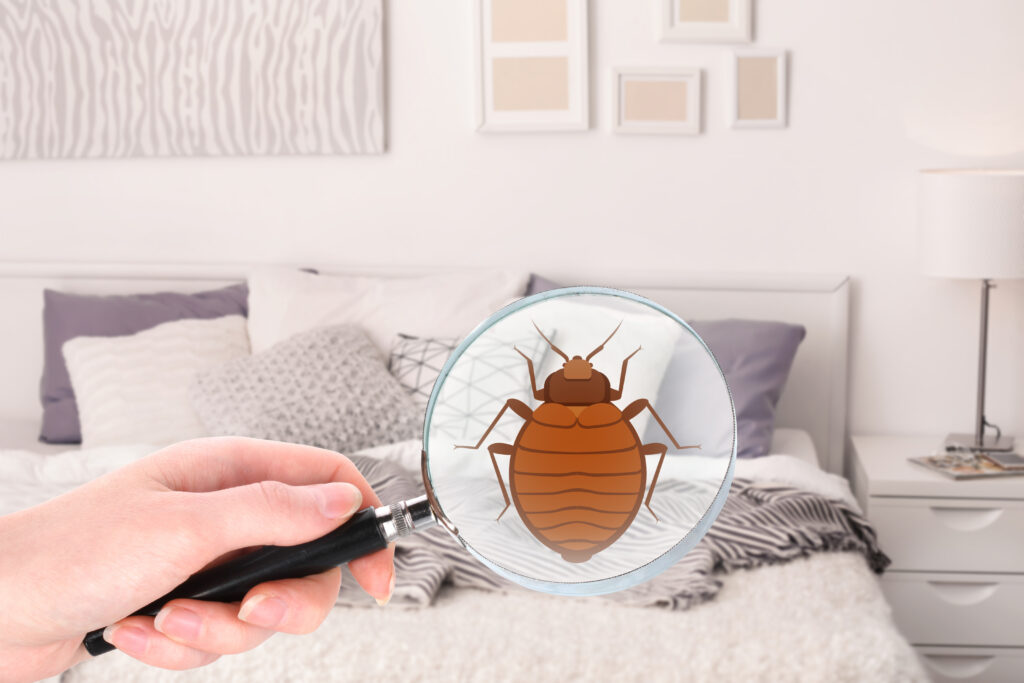A1 Bed Bug Exterminator Houston: Quick Removal Solutions
Wiki Article
Comprehending the Lifecycle of Bugs for Targeted Control Strategies
Understanding the lifecycle of parasites is an essential facet of efficient parasite monitoring techniques. By understanding the numerous phases of advancement that insects undergo, a more specific and targeted technique can be embraced to manage their populations. This understanding not only drops light on the vulnerabilities within the pest lifecycle yet likewise leads the way for executing critical procedures that can interrupt their growth and recreation cycles. Through a deeper understanding of exactly how pests develop and flourish, tailored control methods can be made to deal with certain factors in their lifecycle, inevitably causing even more effective pest management outcomes.Relevance of Recognizing Parasite Lifecycle
Recognizing the lifecycle of bugs is crucial for developing efficient and targeted control methods in bug management. By comprehending the different stages an insect goes with from egg to adult, bug control specialists can recognize vulnerable points in the lifecycle where intervention can be most effective.In addition, recognizing the specific environmental problems needed for each and every stage of the bug's lifecycle can assist choices on environment modification or exclusion approaches to interrupt the lifecycle and lower bug populaces. This understanding allows pest management specialists to apply aggressive measures as opposed to counting entirely on responsive therapies, resulting in even more sustainable and long-lasting parasite control options. Eventually, a complete understanding of parasite lifecycles empowers pest control experts to customize their methods properly, taking full advantage of and lessening ecological effects control results.
Key Phases in Insect Development
To effectively implement targeted control strategies in insect administration, an important element lies in adequately recognizing and recognizing the key stages in parasite growth. Bug development normally is composed of several crucial stages that are vital for their lifecycle and management.

Vulnerabilities in Parasite Lifecycle
Throughout the various stages of a parasite's lifecycle, unique vulnerabilities emerge that can be strategically targeted for efficient control measures. One crucial susceptability exists in the egg phase, where bugs are usually extra prone to specific insecticides or biological control agents as a result of their soft external covering, making them much easier targets for treatment. Furthermore, the larval or nymph stage presents susceptabilities as bugs undertake quick growth and growth, calling for high energy usage that can be made use of by interrupting their food sources or introducing development preventions. Pupal stages, characterized by stability and change, use a home window for targeted control via physical obstacles or specific therapies that prevent successful emergence. Adult parasites, while much more durable due to their reproductive ability, can still be at risk during mating or egg-laying activities, which can be interfered with via pheromone traps or my website sanitation methods. Recognizing these vulnerabilities in the pest lifecycle is crucial for establishing reliable and precise control techniques that efficiently manage insect populations while lessening environmental impact.Carrying Out Targeted Control Measures

Implementing targeted control procedures typically includes a multi-faceted approach. This might include environment adjustment to make the setting less congenial to insects, such as eliminating standing water for insect control or securing entrance factors for rats. In addition, biological control methods can be made use of, where all-natural predators or pathogens are introduced to maintain parasite populations in check.
Integrated Parasite Monitoring (IPM) approaches that integrate various control actions in a collaborated and lasting way are often the most reliable in attaining long-term pest monitoring goals. By applying targeted control steps based on a detailed understanding of pest lifecycles, bug populaces can be efficiently controlled while minimizing dangers to human health and wellness and the atmosphere.
Improved Insect Administration Practices

Furthermore, the consolidation of biological control representatives, such as natural killers or virus of insects, can help in reducing reliance on chemical pesticides and advertise a more balanced ecosystem. Carrying out physical obstacles and traps can likewise belong to boosted bug monitoring techniques, using non-toxic and targeted services for pest control. In addition, the use of pheromones and other semiochemicals can disrupt pest breeding patterns and communication, causing reduced pest populations in time.
Verdict
By identifying key phases in bug development and susceptabilities in their lifecycle, targeted control procedures can be carried out to reduce pest populaces. Enhanced parasite administration practices can aid minimize the reliance on broad-spectrum chemicals and promote more environmentally pleasant and lasting pest control approaches.Comprehending the lifecycle of insects is important for creating reliable and targeted control techniques in pest monitoring. By this link understanding the various stages a bug goes through from egg to grownup, insect control specialists can determine vulnerable points in the lifecycle where treatment can be most successful. Inevitably, a thorough understanding of bug lifecycles empowers bug control specialists to customize their approaches efficiently, minimizing environmental influences and making the most of control results.
By applying targeted control measures based on a complete understanding of pest lifecycles, insect populaces can be efficiently controlled while lessening threats to human health and the atmosphere.
By recognizing key stages in parasite development and vulnerabilities in their lifecycle, targeted control actions can be implemented to lessen parasite populations.
Report this wiki page